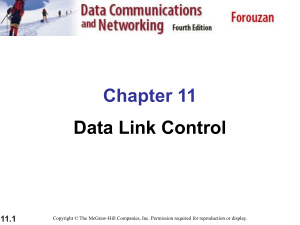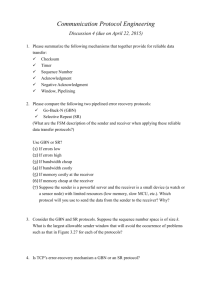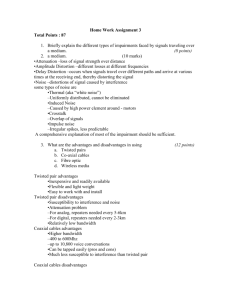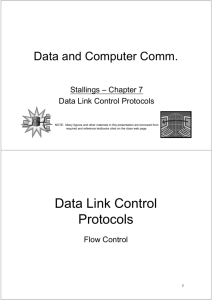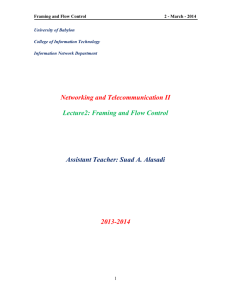Homework 3
advertisement
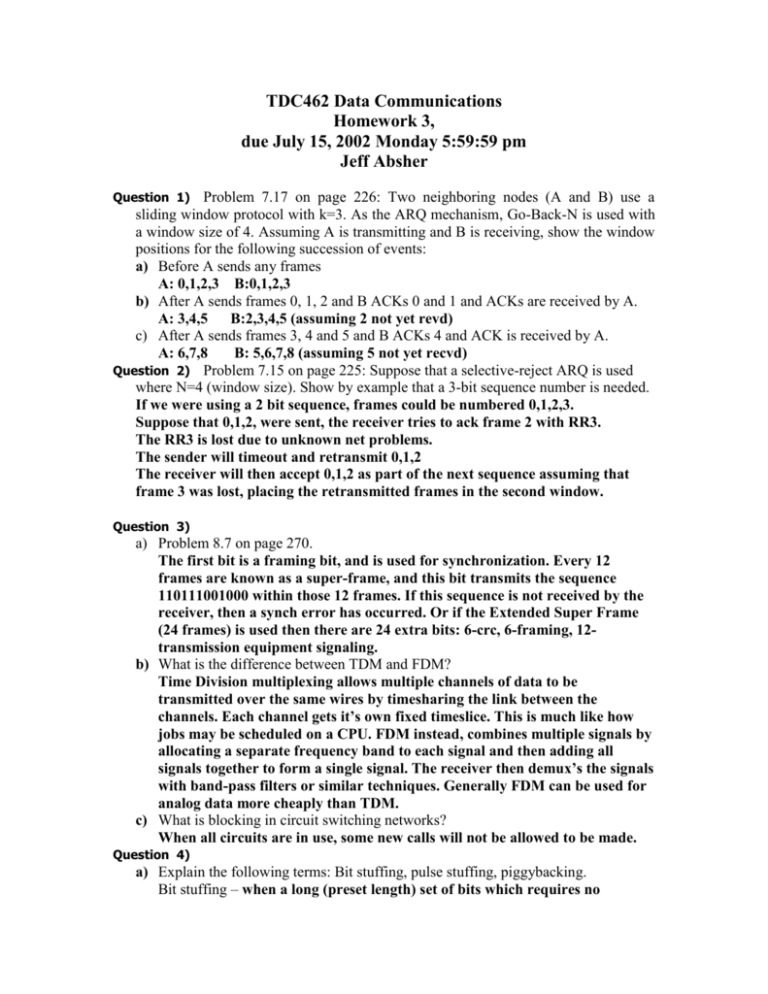
TDC462 Data Communications Homework 3, due July 15, 2002 Monday 5:59:59 pm Jeff Absher Question 1) Problem 7.17 on page 226: Two neighboring nodes (A and B) use a sliding window protocol with k=3. As the ARQ mechanism, Go-Back-N is used with a window size of 4. Assuming A is transmitting and B is receiving, show the window positions for the following succession of events: a) Before A sends any frames A: 0,1,2,3 B:0,1,2,3 b) After A sends frames 0, 1, 2 and B ACKs 0 and 1 and ACKs are received by A. A: 3,4,5 B:2,3,4,5 (assuming 2 not yet revd) c) After A sends frames 3, 4 and 5 and B ACKs 4 and ACK is received by A. A: 6,7,8 B: 5,6,7,8 (assuming 5 not yet recvd) Question 2) Problem 7.15 on page 225: Suppose that a selective-reject ARQ is used where N=4 (window size). Show by example that a 3-bit sequence number is needed. If we were using a 2 bit sequence, frames could be numbered 0,1,2,3. Suppose that 0,1,2, were sent, the receiver tries to ack frame 2 with RR3. The RR3 is lost due to unknown net problems. The sender will timeout and retransmit 0,1,2 The receiver will then accept 0,1,2 as part of the next sequence assuming that frame 3 was lost, placing the retransmitted frames in the second window. Question 3) a) Problem 8.7 on page 270. The first bit is a framing bit, and is used for synchronization. Every 12 frames are known as a super-frame, and this bit transmits the sequence 110111001000 within those 12 frames. If this sequence is not received by the receiver, then a synch error has occurred. Or if the Extended Super Frame (24 frames) is used then there are 24 extra bits: 6-crc, 6-framing, 12transmission equipment signaling. b) What is the difference between TDM and FDM? Time Division multiplexing allows multiple channels of data to be transmitted over the same wires by timesharing the link between the channels. Each channel gets it’s own fixed timeslice. This is much like how jobs may be scheduled on a CPU. FDM instead, combines multiple signals by allocating a separate frequency band to each signal and then adding all signals together to form a single signal. The receiver then demux’s the signals with band-pass filters or similar techniques. Generally FDM can be used for analog data more cheaply than TDM. c) What is blocking in circuit switching networks? When all circuits are in use, some new calls will not be allowed to be made. Question 4) a) Explain the following terms: Bit stuffing, pulse stuffing, piggybacking. Bit stuffing – when a long (preset length) set of bits which requires no transition is sent, clocks can get out of sync, so a bit which causes a transition is sent so that the clocks between sender and receiver can be synchronized. The receiver removes this stuffed bit before sending the sequence to higher layers. Pulse Stuffing – Technique used in TDM to fill in empty slots in the datastream when the datarates of the sender and receiver are not the same or when a sender is inactive Piggybacking – Sending both control data (acks) and user data over the same line in the same direction, The receiver of a frame waits until it has a userdata frame to send, and “appends” its acknowledgement for the received frame to the frame that it is going to send. b) How does the xDSL standard enable carrying fast data rates over the same twisted pair of wires we use for the telephone lines? Explain. At the CO, there are filters placed on the lines to maintain voice-quality-only bandwidth on POTS twisted pair. Those filters are removed and therefore allow higher bandwidth between the demarc and the CO. Also, unlike voice POTS, different rates for upstream and downstream data may be used. Remarks: Each question is 20 points. Submit your answers only via DLWeb. No late homeworks accepted. No exceptions to the rules!


